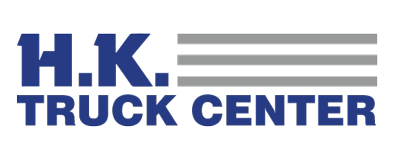
4 Steps Fleets Can Take to Mitigate Supply Chain Issues
At the beginning of the COVID-19 pandemic, the talk was all about shortages of PPE, toilet paper, and a plethora of other items. The trucking industry, and specifically truck drivers, were heroes at that point in time, making sure vital products got to their destination, even at the expense of their own health.
Back then, few were predicting that the industry would suddenly find itself facing supply chain shortages of its own. Whether it’s new trucks, parts and components, or human talent, everything seems to be in short supply (or, in the case of new trucks, non-existent). Unfortunately, with the pandemic refusing to depart, factories in China are still closed, increasing the backlog on chips and other components. Combine that with increasing inflation, rising diesel costs, an aging workforce, and aging assets, and you’ve got the formula for difficult times ahead.
But there are steps you can take to mitigate these problems. I addressed the supply chain issues last month in an IdeaXchange blog.
Analyze asset utilization
Do you know which vehicles are being overutilized or underutilized? Overutilization means increased wear and tear on tires, brakes and other components. Bad idea at any time…a lot worse when all of these products are in short supply. Instead, look at the data on which assets are being used, length of trips, size of loads, etc. Once you do that, try to equalize usage whenever possible. Having the right analytics software makes better utilization possible. With the lack of new truck availability, equalizing the usage of each vehicle in your fleet can lead to a longer, more productive life cycle overall.
Evaluate routing
Once again, as in the case of utilization, technology (in this case, route optimization software) can play an important role. According to a Worktruck article, route optimization can “help reduce miles driven, maximize hours of service, improve order accuracy, speed up delivery times, increase productivity, reduce wear and tear on vehicles, improve driver satisfaction, reduce fuel spend, and even increase customer satisfaction.” That’s an impressive list of benefits. In addition, communication with customers is important. Some may be flexible when it comes to pick up and delivery, or perhaps their needs have changed.
Beef up maintenance
With the new truck shortages, you need to extend the life cycle of your existing vehicles and that means better and more frequent maintenance. And it’s not a one size fits all when it comes to maintenance schedules. It’s always better to be proactive than reactive. A FleetOwner article notes that you should look at the schedules for each asset and alter them as needed to try to prevent breakdowns on the road. Some vehicles may have ongoing issues that will make them the prime assets to be retired whenever new trucks are delivered. Some may need maintenance more frequently than others. If you’re concerned about taking assets out of service, remember that on-road breakdowns are costly and time-consuming. In addition, better maintained vehicles will have better fuel optimization, and with the rising diesel costs, that’s vital.
Improve recruitment and retention policies
The employment situation has put the power in the hands of the employee. And with the perpetual shortages of drivers and techs the industry faces, this is the time to reevaluate how you recruit new talent and how to keep your best employees with you. It’s also the time to look at the skillsets needed and specifically search for those candidates that have the necessary abilities. I’ve written many blogs on this issue. In January, I posted an IdeaXchange blog on HR challenges for 2022. Some challenges are directly pandemic-related (mandates, remote working); others are related to an economy where jobs are plentiful and competition for workers is leading employers to look at new ways to recruit and retain.
Although there’s not much that any single business can do to change the inflationary trajectory, taking the steps necessary to mitigate issues is a necessary step.

About Jane Clark
Jane Clark is Vice President of Member Services for NationaLease. Before joining the full service truck leasing organization, she served in executive positions with some of the nation’s top staffing and recruitment agencies.




